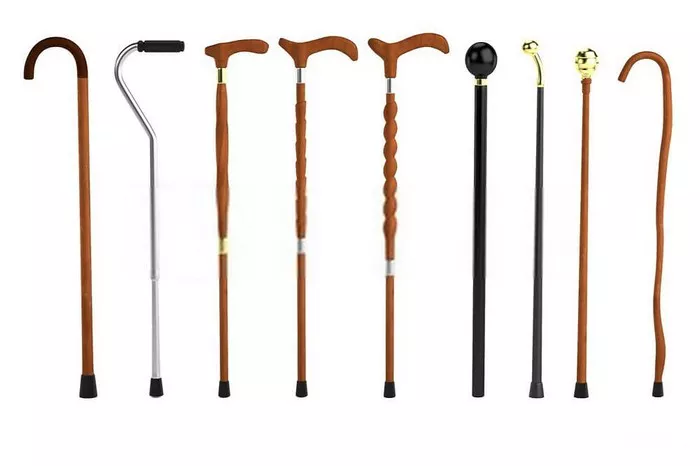Nordic walking, a full-body exercise that originated from cross-country skiing, has become a popular activity for hikers, fitness enthusiasts, and mountain climbers. Unlike traditional hiking poles, Nordic walking sticks are designed to engage the upper body while walking, transforming a simple hike into a dynamic workout. However, using them improperly can lead to fatigue, strain, or even injury. This essay will guide you through the correct techniques for using Nordic walking sticks, ensuring you maximize their benefits while staying safe on the trail.
1. Understanding Nordic Walking Sticks
Nordic walking sticks differ from standard trekking poles in design and purpose. They are lighter, often made of carbon fiber or aluminum, and feature ergonomic handles with removable rubber tips and wrist straps. Their primary goal is to promote a rhythmic, full-body motion that activates the arms, shoulders, chest, and core muscles. When used correctly, they improve posture, reduce joint impact, and enhance endurance.
2. Choosing the Right Poles
Proper use starts with selecting poles suited to your needs.
Length
Nordic poles should be shorter than trekking poles. A common formula is to multiply your height (in centimeters) by 0.68. For example:
If you’re 170 cm tall: 170 x 0.68 = 115.6 cm (rounded to 115 cm).
Alternatively, stand upright, grip the pole, and ensure your elbow forms a 90-degree angle when the pole tip touches the ground.
Material
- Carbon fiber: Lightweight and shock-absorbent but expensive.
- Aluminum: Durable and affordable but slightly heavier.
Features
- Adjustable vs. fixed-length: Adjustable poles offer flexibility for varied terrain.
- Wrist straps: Ensure they’re padded and easy to release in emergencies.
- Tips: Rubber tips for pavement, metal spikes for trails.
3. Proper Grip and Posture
Gripping the Pole
- Slide your hand upward through the wrist strap.
- Grip the handle so the strap rests between your thumb and index finger (like a “handshake”).
- Secure the strap snugly to transfer force from your arm to the pole without straining your wrist.
Posture
- Stand tall with shoulders relaxed and core engaged.
- Avoid hunching or leaning forward.
- Keep your gaze ahead, not at your feet.
4. The Nordic Walking Technique
Basic Movement
Nordic walking mimics the natural arm swing of walking but amplifies it:
- Plant the pole at a backward angle, positioning it mid-stride.
- Right pole touches the ground as your left foot steps forward, and vice versa.
- Push backward through the strap, engaging your triceps and lat muscles.
- Release the pole smoothly as your arm swings behind you.
Rhythm and Coordination
- Maintain a steady, natural rhythm. Your arms and legs should work in opposition (right arm/left leg).
- Avoid planting the pole too far ahead, which can disrupt balance.
Engage Your Core
Rotate your torso slightly with each stride to activate your obliques and improve stability.
5. Adapting to Terrain
Uphill
- Shorten your stride and lean slightly forward.
- Plant poles closer to your body for better leverage.
- Push harder with your arms to reduce strain on your legs.
Downhill
- Lengthen the poles slightly (if adjustable).
- Plant poles slightly ahead to control speed and absorb impact.
- Keep your weight centered to avoid slipping.
Uneven Trails
- Use poles to test ground stability before stepping.
- Plant both poles firmly for balance when navigating rocks or roots.
6. Common Mistakes to Avoid
Incorrect Pole Length
Too long: Strains shoulders. Too short: Limits range of motion.
Overstriding
Planting poles too far ahead disrupts rhythm and strains shoulders.
Death Grip
Squeezing the handle tightly causes forearm fatigue. Let the wrist strap bear the load.
Poor Posture
Slouching negates the core-strengthening benefits and strains the lower back.
7. Maintenance and Safety
Inspect Regularly
Check for cracks, loose parts, or worn tips. Replace damaged components immediately.
Clean After Use
Wipe down poles with a damp cloth, especially after hiking in mud or sand.
Store Properly
Keep poles dry and disassembled (if adjustable) to prevent corrosion.
8. Benefits of Nordic Walking
- Full-body workout: Burns 20–46% more calories than regular walking.
- Reduces joint impact: Distributes weight evenly, easing pressure on knees and hips.
- Improves balance: Enhances stability on uneven terrain.
- Boosts endurance: Builds strength for long hikes or climbs.
Conclusion
Nordic walking sticks are a powerful tool for hikers and climbers, but their effectiveness depends on proper technique. By selecting the right poles, maintaining good posture, and mastering the rhythmic push-off motion, you can transform your hikes into efficient, full-body workouts. Start on flat terrain to practice the basics, then gradually tackle hills and trails as your confidence grows. Remember: Nordic walking isn’t just about moving faster—it’s about moving smarter, engaging your entire body, and unlocking new levels of strength and stamina. With patience and practice, you’ll harness the full potential of this dynamic activity, making every step count on your mountain adventures.
Related topics:
Why Do Hikers Use Walking Sticks?
Best Walking Sticks for Hiking: A Comprehensive Guide
How to Hold Nordic Walking Sticks

